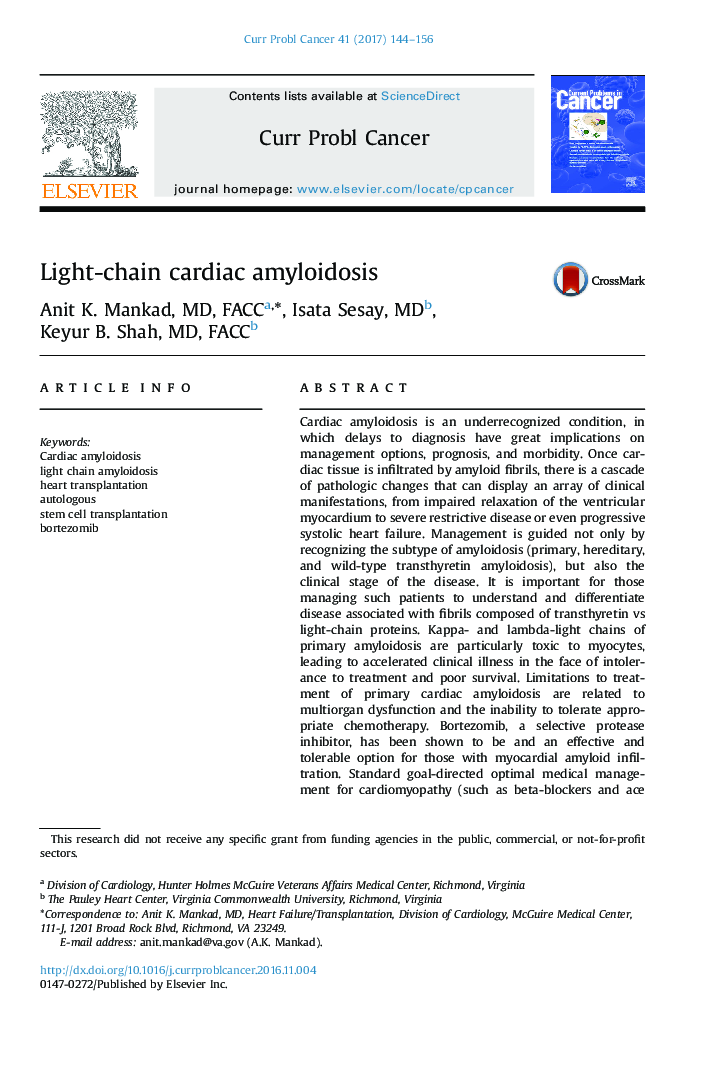| Article ID | Journal | Published Year | Pages | File Type |
|---|---|---|---|---|
| 5664239 | Current Problems in Cancer | 2017 | 13 Pages |
Cardiac amyloidosis is an underrecognized condition, in which delays to diagnosis have great implications on management options, prognosis, and morbidity. Once cardiac tissue is infiltrated by amyloid fibrils, there is a cascade of pathologic changes that can display an array of clinical manifestations, from impaired relaxation of the ventricular myocardium to severe restrictive disease or even progressive systolic heart failure. Management is guided not only by recognizing the subtype of amyloidosis (primary, hereditary, and wild-type transthyretin amyloidosis), but also the clinical stage of the disease. It is important for those managing such patients to understand and differentiate disease associated with fibrils composed of transthyretin vs light-chain proteins. Kappa- and lambda-light chains of primary amyloidosis are particularly toxic to myocytes, leading to accelerated clinical illness in the face of intolerance to treatment and poor survival. Limitations to treatment of primary cardiac amyloidosis are related to multiorgan dysfunction and the inability to tolerate appropriate chemotherapy. Bortezomib, a selective protease inhibitor, has been shown to be and an effective and tolerable option for those with myocardial amyloid infiltration. Standard goal-directed optimal medical management for cardiomyopathy (such as beta-blockers and ace inhibitors) does not offer a survival benefit with cardiac amyloidosis, and often is associated with adverse effects. Despite advances in treatment of advanced heart failure therapy, end-stage cardiomyopathy in the setting of amyloidosis is not well stabilized by inotropes or mechanical circulatory support, and offers restricted candidacy for heart transplantation. We review the salient features of cardiac amyloidosis to help general practitioners and subspecialists manage this unique clinical condition.
